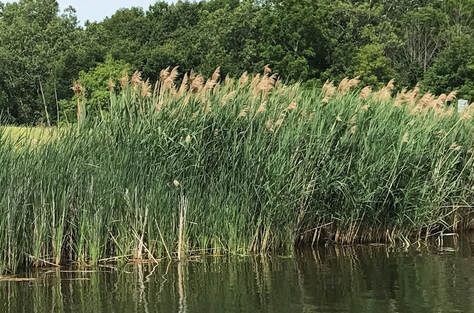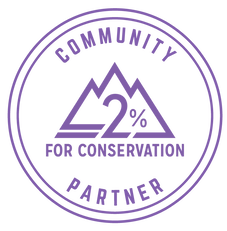Wetland Restoration
Tamarisk A mature Tamarisk tree can drink upwards of 200 gallons of water per day and upwards of 60,000 seeds annually. It changes the PH balance in the surrounding soil by increasing the salt content, thus giving it the nick-name Salt Cedar. This prevents or chokes out natives plant species.
|
PhragmitePhragmites is an invasive plant species to Utah. This plant is a water hog and spreads out in colonies taking over mass areas forcing out native plant species in wetland areas devastating waterfowl feeding and breeding areas. In average conditions it is assumed phragmites absorbs 33" of water Between May-October.
|
Why we remove it.
Tamarisk and Phragmites are two of the main invasive plant species we focus on removing. The biggest reason is they are not native to Utah, they are water hogs and they choke out native plant species, changing the wetland ecosystem. As these plant species expand across our wetlands they take over vital feeding and breeding habitat for waterfowl and other wetland species.
Current locations of focus
|
King Fisher Wetlands
In June 2016 we enter into a contractual stewardship of King fish wetlands with Weber County. Since then we have effectively pushed back phragmites increasing the amount of available wetland to native wild life. Bear River Migratory Bird Refuge
In 2022 we started a job site focused on phragmites mitigation along the Bear River in unit 3G. In 2024 we are starting phragmites mitigation by adopting unit 2C. This 702 acre unit has an approximate 55% (386 acre) phragmites infestation. |
Willard Spur (Federal, State and Private Properties)
In 2020 we started a multi year project on the Willard Spur. This project is a partnership with Weber Basin Water Conservancy District, Utah Department of Wildlife Resources, Willard Bay Gun Club, the Willard Gun Club and Bureau of Reclamation to remove Tamarisk and Phragmites along both sides of the outlet channel of Willard Bay and the four mile stretch along the North side of Willard Bay. In total this project includes approximately 27 acres of invasive plant species. In 2023 we conducted our first re-vegetation effort. We planted 820 bulrush plugs with approximately 75% success rate. In 2024 we'll plant another 1100 plugs and a few mats. In 2024 we are working to wrap up phase 1 of the Willard Spur and direct our attention more towards the state Waterfowl Management Area for phase 2. |
How do we remove it
|
Tamarisk
Tamarisk can be removed by multiple means 1. Tamarisk can be removed by means of large equipment. An excavator can pull the tamarisk including its stump from the ground and regrade the soil for future re-vegetation. Additional measure such as physical examination to ensure all possible roots have been removed will aid in preventing regrowth. Four to six months after mechanical removal of Tamarisk saplings are acceptable to herbicidal treatment. Additional mowing of Tamarisk saplings should take place in early Spring (March – April) with additional herbicidal treatments again in August of the same year. 2. Tamarisk can be cut by use of chainsaw or other cutting device exposing the inner tissue of the plant. Herbicide can be applied to the exposed tissue effectively killing the plant. Remaining tamarisk stump is left to decay. |
Phragmites
Phragmites Takes a two part method to remove in a given area. 1. Herbicide treatment is applied in later summer (Aug-Sept). The plant draws in the herbicide as it goes in a form of hibernation for the pending winter. Drawing the herbicide down it it roots and effectively killing the plant. 2. In early spring (March-April) the previously treated phragmities needs to be mowed or burned to clearing the dead plant allowing the dormant seeds to grows. 3. A second mowing in mid summer (June) or use of cattle prevents the plants from maturing and producing seed. This method has been used by WW at our Kingfisher wetland site with great results and is utilized by Utah DWR in their Waterfowl management Areas. This method of mowing /burning and herbicidal treatment continues until the invasive planet species has been reduced to the acceptable threshold. |
What does your donation go to?
Before & After Videos of tamarisk cut and treat method used.
Before |
After |
|
|
|
Re-Vegetation |
Cut and treat of new shoots |
The funds you donate to this program gets used in the purchase of the herbicide and equipment / tooling needed to push back these and other invasive species, including the re-vegetation of the area when necessary.



